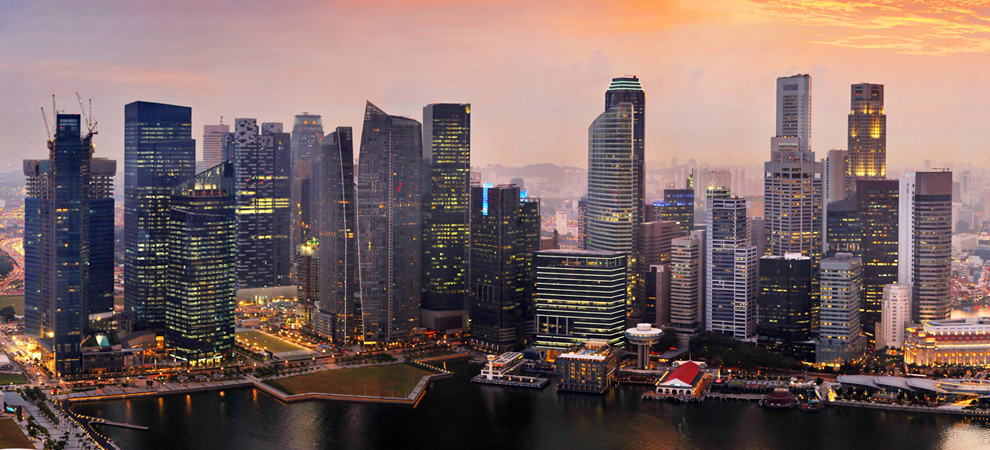The WPJ
THE WORLD PROPERTY JOURNALReal Estate Facts Not Fiction
Commercial Real Estate News

Coronavirus Still Impacting Singapore's Commercial Property Market in Q3
Commercial News » Singapore Edition | By Michael Gerrity | November 6, 2020 8:15 AM ET
According to real estate consultant Edmund Tie, the office climate in Singapore was relatively subdued in Q3 2020 as the majority of the workforce continued to work from home as a default venue from the COVID-19 pandemic.
Conditions remained challenging in the retail sector, especially in Orchard/Scotts Roads due to the dearth of tourist arrivals. However, malls in the Fringe/Suburban areas fared better given their proximity to residential catchments and first-story rents saw limited declines.
In the industrial sector, demand was driven by the F&B, logistics and warehousing segments. Mr. Lam said: "Regulatory constraints continue to limit the dine-in capacity at various outlets. F&B operators have adapted by offering more food delivery and takeout options. Some of the bigger restaurant chains took up industrial space to consolidate their operations or house a central kitchen. As a result, there had been significant leasing demand originating from central kitchens."
There was also demand coming from logistics and warehousing on the back of robust demand coming from e-commerce services and stockpiling activities done by supermarkets.
Mr. Lam said, "While the overall outlook for the industrial sector is expected to brighten gradually as global manufacturing recovers, this progression is expected to be uneven across different sectors. For instance, rising online and groceries sales will incentivize retailers to stockpile and expand their warehouse facilities to cater to the increasing demand.
"In additional to economic factors, demand for industrial properties is also largely dependent on location and efficiency of floor plates. Industrial developments that are located close to transportation nodes and have efficient floor plates will therefore enjoy greater advantage in attracting tenants. Landlords of older developments could make use of this soft climate to upgrade their facilities, so that they can meet with the demand when the market recovers," he added.
Sign Up Free | The WPJ Weekly Newsletter
Relevant real estate news.
Actionable market intelligence.
Right to your inbox every week.
Real Estate Listings Showcase
Related News Stories
Commercial Real Estate Headlines
- 2025 Prediction: U.S. Commercial Investment Recovery Expected to Gain Traction
- Holiday Retail Sales for 2024 to Hit Record $1 Trillion
- Tech, AI Industries Drive Largest Share of Office Leasing Activity in U.S.
- Commercial Real Estate Lending in U.S. Enjoys Strong Growth in Q3
- U.S. Multifamily Market Begins Recovery in Q3
- Commercial Investment in Japan Spikes 24 Percent Annually in Q3
- Despite Return-to-Office Mandates, U.S. Office Vacancies Continue to Rise
- PROPSIG Tech Startup Acquired by World Property Data
- U.S. Commercial Mortgage Debt Hits $4.7 Trillion in Q2 as Delinquencies Increase
- Hong Kong Class A Office Rents Continue to Downtick in Mid-Summer
- U.S. Office Landlords Tenant Concessions Decline for First Time in 4 Years
- U.S. Commercial Mortgage Originations Spike 27 Percent in Q2 Over Q1
- Phnom Penh's Commercial Office, Retail Markets Face Slowdowns in 2024
- Global Edge Data Center Market to Hit $300 Billion by 2026
- Commercial Property Transactions in Japan Dive 25 Percent Annually in Q2
- Delinquency Rates for U.S. Commercial Property Loans Downticks in Q2
- Megawarehouse Lease Deals in U.S. Increase in 2024
- Office Tenants' Flight to Quality Buildings Increases in 2024
- Commercial Lending in Japan Upticks 6 Percent Annually in Q1
- AI Driving Significant Global Data Center Growth in 2024
- Total U.S. Commercial Mortgage Debt Rises to $4.7 Trillion in Q1
- U.S. Commercial Mortgage Delinquencies Rise in Early 2024
- Asia Pacific Office Sector to Further Reprice Throughout 2024
- U.S. Retail Foot Traffic to Surpass Pre-Pandemic Levels by 2025
- Commercial Real Estate Lending in U.S. Slowed in First Quarter
- Japan Commercial Property Investment Volume Jumps 7 Percent in Q1
- Asia Pacific Commercial Property Investment Leads the World, Spikes 13 Percent
- Driven by High Rates, U.S. Commercial Lending Imploded 47 Percent in 2023
- After Two Year Slump, Prime Multifamily Metrics Uptick in U.S.
- Commercial Co-Broker Commissions Not Affected by NAR-DOJ Settlement, Yet
- U.S. Office Buildings with Upscale Tenant Amenities Still Enjoy Premium Rents in 2024
- U.S. Commercial, Multifamily Mortgage Delinquency Rates Uptick in Q4
- U.S. Commercial Mortgage Debt Continued to Rise in 2023, Hits $4.7 Trillion
- Nonresidential Construction Spending in the U.S. Falls Sharply in January
- U.S. Multifamily Construction Starts to Decline in 2024
- Commercial Mortgage Lending in U.S. Shows Signs of Stabilization in Late 2023
- Architecture Billings Decline in December as Soft Business Conditions Persist
- Government Sector Claimed Largest Portion of 100 Biggest U.S. Office Leases Signed in 2023
- U.S. Commercial, Multifamily Borrowing Dives 25 Percent Annually in Late 2023
- Record High Multifamily Construction Deliveries Drive Vacancy Rates Higher
Reader Poll
Marketplace Links
This website uses cookies to improve user experience. By using our website you consent in accordance with our Cookie Policy. Read More





